Meet the Padma Shri awardee & Artisans from Andhra Pradesh Preserving the Art of Hand-Drawn Kalamkari
Founded in 1999, Dwaraka (Development of Weavers and Rural Artisans in Kalamkari), a not-for-profit organisation spearheaded by Anita Reddy aims to revive Kalamkari and empower the artisans behind the craft.
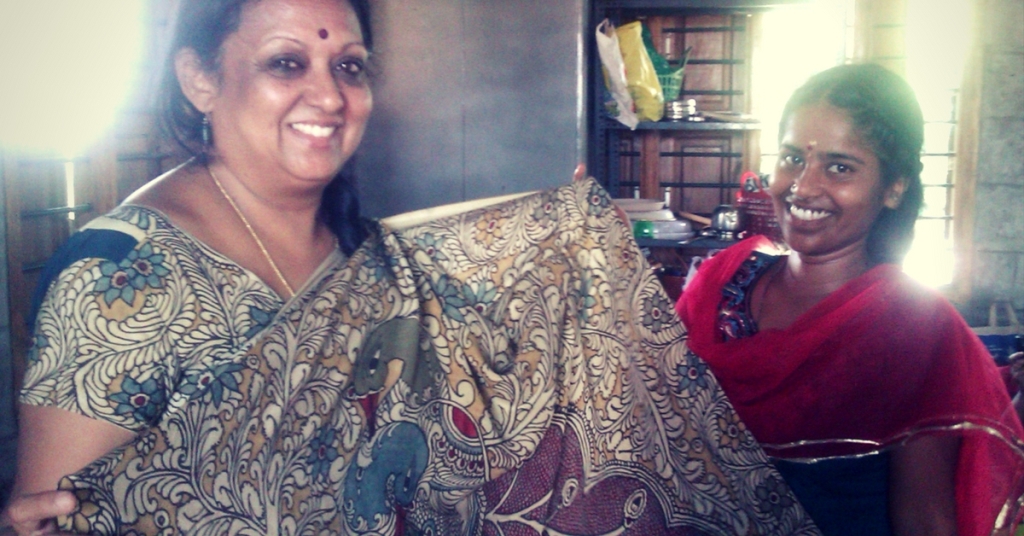
As a passionate admirer of the Kalamkari textile art, I am thrilled to find myself at an artisans’ workshop in the small temple town of Sri Kalahasti. A group of about 100 women surround me, bearing their works of art. Exquisite trees, intricate peacocks and detailed depictions of deities are spread across soft cotton fabric. For someone who can never resist Kalamkari kurtas, bags, cushion covers and sarees, this is paradise!
This is Dwaraka (Development of Weavers and Rural Artisans in Kalamkari), a not-for-profit organisation spearheaded by Anita Reddy.
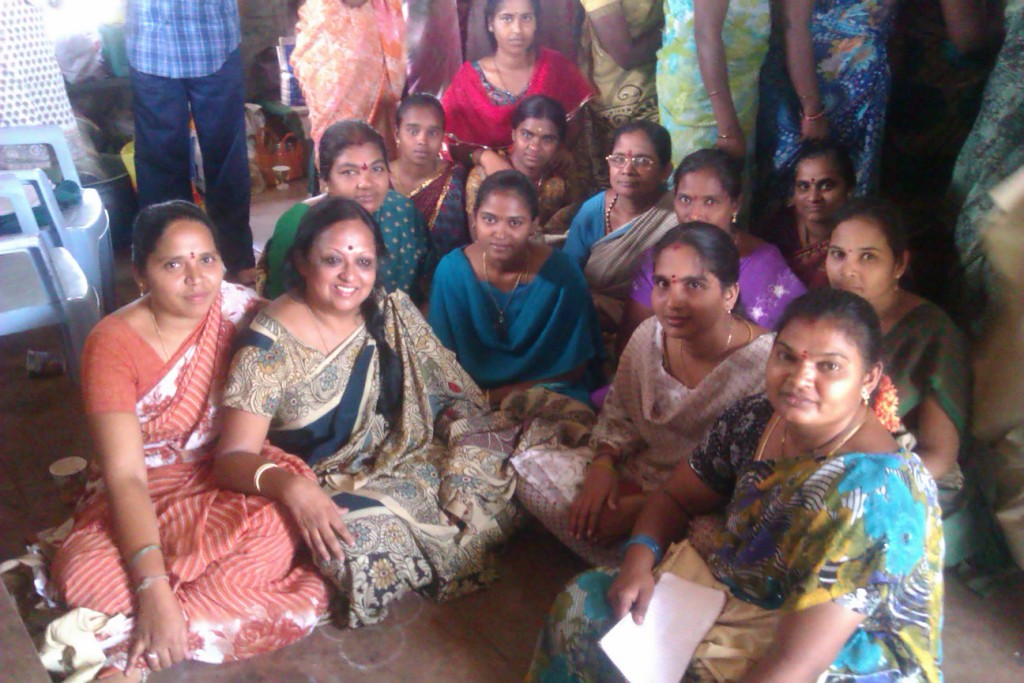
The initiative started in 1999, when an elderly kalamkari artist knocked on the door of Anita’s residence in Bangalore (as Bengaluru was known then) in despair, bearing his artworks for sale. It was through him that Anita and her father, Dwaraknath Reddy, came to know about the declining artisan community in Kalahasti and decided to do something to empower its craftspeople.
With support from the Ramanarpanam Trust, set up by Anita’s father, they brought all the local artists together, got them to train others, especially women, and established a sustainable model of work for the community.
“It’s been a wonderful journey,” Anita says. “Kalamkari was traditionally practised by men in the family, and the art form was typically dominated by them. However, we’ve been able to successfully involve women in the process, which has helped them become economically independent.”
The women at Dwaraka have not only been given the gift of independence, but have also discovered a new way to express themselves. Kanchana, a 29-year-old woman is currently the general secretary of the group. The lead artists, Hema, Chandrakala and Madhavi, help train other artists and newcomers. Together, they proudly hold up a large piece of fabric featuring two richly decorated peacocks, complete with red beaks, yellow feathers and blue tails.
Sri Kalahasti is one of the two major centres of Kalamkari in India, the other being Machilipatnam.
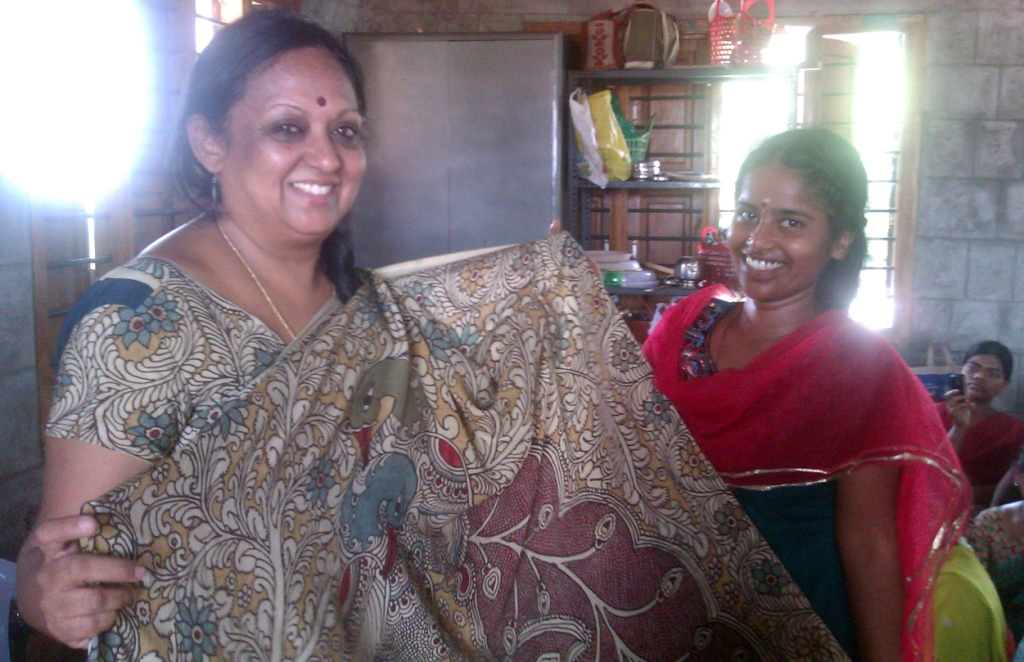
While the Machilipatnam form involves block-printing patterns, here, the patterns are entirely hand-drawn and focus on mythological figures and stories.
Gopi is another artist, and one of the few men here, who volunteers to show me the process. He holds a piece of cloth, which has already been treated with a mixture of cow dung and bleach to even out the fabric tone. Along with some of the women, we go out to the yard, where Gopi brings out a large bucket with a yellowish paste in it – a mixture of buffalo milk and myrobalan flowers (karakapuvvu).
You might also like: How a Conservationist’s Love for Chittara Art Led Her to Empower the Community Behind the Art Form
One of the women dips the cloth in the mixture, and another helps her wring it out. They repeat the process twice, and inform that it removes any lumps that the myrobalan might form. Myrobalan helps fabrics to take on dyes easily. “Without this treatment, the ink won’t stick to the cloth,” Gopi says.
The solution smells a little weird, even a little familiar—perhaps I’ve smelt it on kalamkari cloth before. This comes from buffalo milk, and the myrobalan helps prevent it.
Back inside the large hall, the women display their drawing tools.
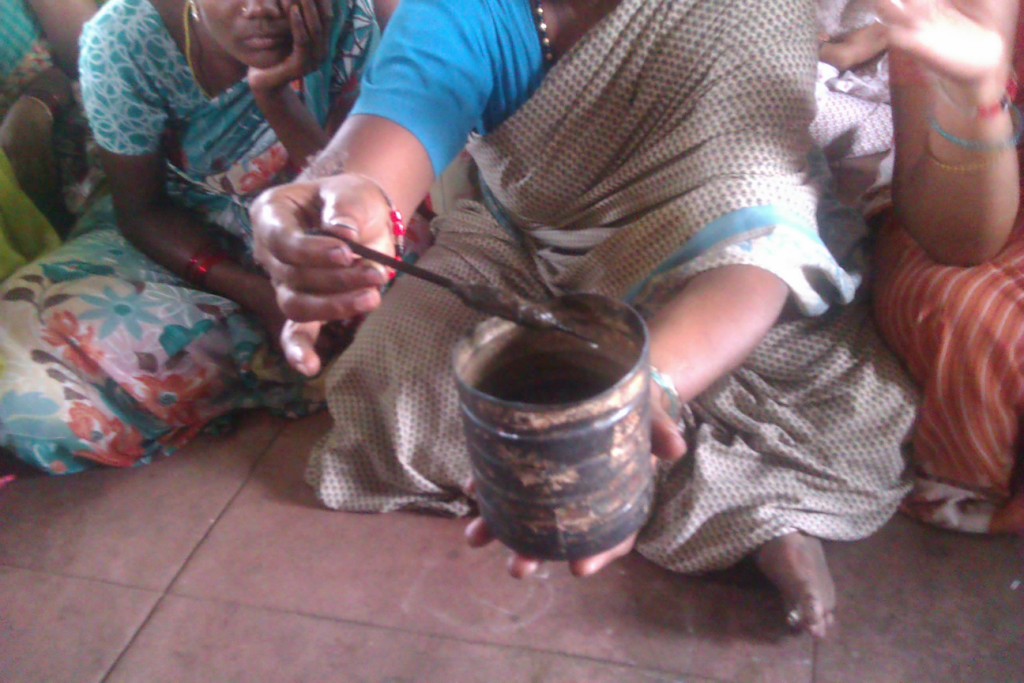
For the initial outlines, a piece of tamarind bark is used. For the filling, soft thread is tied around a wooden stick, which holds the ink. By the looks of it, it must take practice to get smooth lines on the cloth. Black, solid outlines are made by using a solution of an iron filings and jaggery.
Different colours require different natural dyes to be used. Pomegranate imparts a yellow colour, manjistha or madder is used for that characteristic red colour that we so often see on kalamkari fabrics. Alum is used as a mordant, to fix the dye onto the cloth. The cloth is then held in flowing water (usually in a river) to wash away the mordant, and dried in the sun. The sunnier and hotter the day, the brighter the colour!
You might also like: One Man Is Reviving Channapatna’s Age-Old Woodcraft with an Award-Winning, Design-Based Philosophy
After drying, the cloth is boiled in a large vessel with leaves, flowers and roots of the desired dye sources. Once this treatment is complete, the cloth is one again washed and dried in the sun. While the process of hand-drawing such complicated patterns seems painstaking, the process of dyeing and colouring the fabric seems to take up even more time and effort.
“It’s a long process,” one of the women smiles. “You need a lot of patience!”
As everyone gathers in the hall, I sit on the floor with the women who giggle shyly. “Do you like working here?” I ask a girl sitting next to me. Her eyes light up as she replies, “Thanks to Anita madam, we’re in this place today. We feel truly blessed!”
How do these products reach the market? These beautiful patterns find their way into files and folders, notebooks, lamps, skirts, stoles and even mirrors and wall hangings.
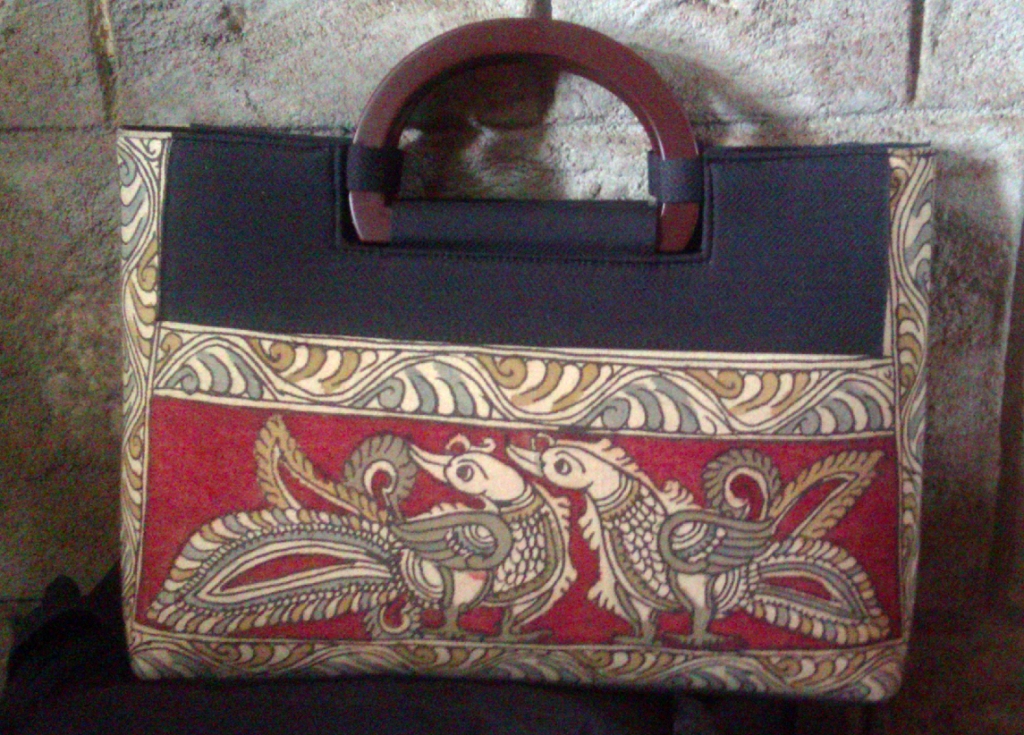
Dwaraka has stores in Bengaluru and Hyderabad, with product prices ranging from ₹20 to ₹3000. “Kalamkari can make anything look good,” Anita says, as she catches me admiring her leather handbag, which features a floral pattern handmade by Dwaraka.
Suddenly, to my surprise, Anita announces, over excited chatter, that everyone will now sing a song! With a little hesitation at first, but picking up quickly, the entire group bursts into a regional devotional tune, with someone even playing the manjeera. As their voices grow more confident and stronger together, they hold the promise of a brighter future for themselves and for this precious art form.
Anita Reddy received the Padma Shri in 2011, for her outstanding contribution as a social worker. However, as she sits among all the Dwaraka members, listening to them sing, she smiles and says, “This is my reward.”
You can contact Anita by writing to her at [email protected]
Like this story? Or have something to share? Write to us: [email protected], or connect with us on Facebook and Twitter.
NEW: Click here to get positive news on WhatsApp!
If you found our stories insightful, informative, or even just enjoyable, we invite you to consider making a voluntary payment to support the work we do at The Better India. Your contribution helps us continue producing quality content that educates, inspires, and drives positive change.
Choose one of the payment options below for your contribution-
By paying for the stories you value, you directly contribute to sustaining our efforts focused on making a difference in the world. Together, let’s ensure that impactful stories continue to be told and shared, enriching lives and communities alike.
Thank you for your support. Here are some frequently asked questions you might find helpful to know why you are contributing?


This story made me
- 97
- 121
- 89
- 167











